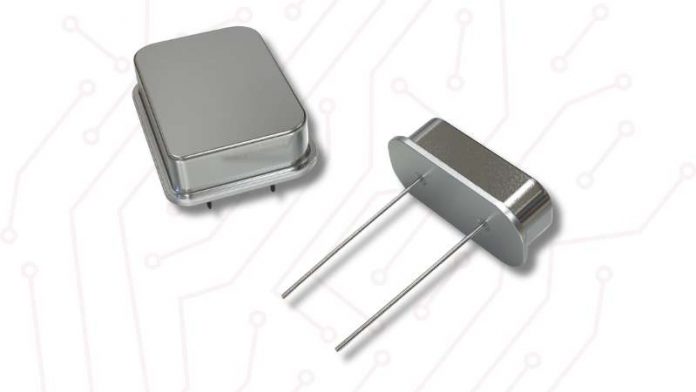Electronic gadgets require crystal oscillators as essential parts of their functioning. They offer accurate timing signals for a range of uses. However, for best results, it’s important to keep the intended frequency. This article will examine several electronic frequency control techniques for crystal oscillators as well as explore how they work so you can select the best one for your purposes.
Contents
Different Electronic Frequency Control Methods
Basically, there are four distinct electronic frequency control methods for crystal oscillators. We’ll have a detailed analysis of each one.
- Pulse width modulation (PWM) and low pass filter (LPF)
- Reference RF signal and phase-locked loop (PLL)
- Voltage divider
- Digital to analog converter (DAC)
Pulse Width Modulation (PWM)
Pulse width modulation (PWM) is a general-purpose technology used to drive DC motors as well as valves, pumps, hydraulics, and other mechanical components. It functions by changing the duty cycle of the signal. The duty cycle is the ratio of pulse length to total pulse time. This ratio allows for frequency adjustments to be made to the output signal. In turn, this makes PWM applicable to applications requiring precise frequency adjustment.
PWM helps in changing a signal’s frequency by adjusting the pulse width of the signal. In order to achieve the desired frequency output in crystal oscillators, PWM adjusts the pulse duration. This method offers accurate and flexible frequency control. It is popular because pulse width enables precise control over the output.
But it also has disadvantages. You see, phase noise or jitter can be introduced to the output signal by PWM, thereby degrading the oscillator’s overall performance. Plus when frequency requirements increase, PWM circuitry can become more complicated and can be less suitable for particular applications.
Reference RF Signal with Phase Locked Loop (PLL)
Sources of reference radio frequency (RF) signals include cesium, rubidium, and master reference oscillators, which are superior crystal oscillators. Reference RF signals are used as external frequency references. After that, the signal is routed into a device known as a phased locked loop or PLL. This device is made up of three primary parts – a voltage-controlled oscillator (VCO), a low pass filter (LPF), and a phase detector (PD).
Now, the phase detector actually works as a phase difference detector, even though it is commonly referred to as a phase detector. Its job is to produce an output signal reflecting the phase difference between two periodic input signals by comparing them. In the meantime, this output passes into a low pass filter, which eliminates unnecessary high frequencies from the signal. The voltage controlled oscillator receives the filtered signal after that.
A voltage accurately controls the output frequency of a voltage controlled oscillator. This implies that we can precisely tune the oscillator’s frequency by modifying the voltage. So in a PLL configuration, the phase detector and low pass filter provide the voltage that drives the VCO.
Basically, the PLL system continuously alters the voltage applied to the VCO in response to the detected phase difference, guaranteeing that the oscillator’s frequency remains in phase with the reference RF signal.
Voltage Divider Method
With the Voltage Divider Method, the bias voltage applied to the crystal oscillator is adjusted using a voltage divider circuit that controls the oscillator’s frequency. The desired value of the resonant frequency can be achieved by adjusting the voltage across the crystal.
This method offers simplicity and cost-effectiveness, making it suitable for basic frequency control applications. However, it may not provide the same level of accuracy and stability as more advanced techniques like PWM or PLL.
Digital to Analog Converter (DAC)
Then there’s the Digital to Analog Converter (DAC) technique. Now, this technique adjusts the frequency of crystal oscillators by converting digital inputs into analog voltages. The oscillator circuit’s analog voltage can be changed to fine-tune the frequency.
Applications with precise timing requirements might benefit from the high precision and resolution of DAC in frequency control. Additionally, DAC offers flexibility and programmability and is simple to integrate into digital systems.
However, it’s important to remember that DAC implementation can call for extra parts and circuitry, raising the system’s total complexity and expense. So choose wisely.
Comparative Analysis
There are a number of aspects to take into account when selecting an electrical frequency control mechanism for crystal oscillators. These include cost, complexity, precision, as well as stability. You see, every approach has benefits as well as its drawbacks. So it’s important to assess each one in light of the demands of the particular application.
Here are some factors to consider. While PWM is straightforward and flexible, it can cause noise and jitter in the output signal. At the same time, PLL offers superior frequency stability, but it also necessitates intricate circuitry and tuning. Although easy to use and reasonably priced, the voltage divider method might not be precise or stable. Although DAC provides high precision and resolution, system complexity and cost can also increase.
Applications of Various Electronic Frequency Control Methods
Let’s have a look at some applications of different frequency control methods in crystal oscillators.
- The PLL method is used in a GPS receiver to maintain precise timing for satellite synchronization. It helps ensure accurate positioning information.
- DAC on the other hand is employed in a telecommunications network to adjust the frequency of clock signals in data transmission systems. This technique helps in ensuring reliable communication.
- Talking about consumer electronics devices, PWM is used for basic frequency control applications, such as adjusting the refresh rate of displays or controlling motor speed in appliances.
Conclusion
All in all, electronic frequency management plays an important role in maximizing the performance of crystal oscillators in a variety of applications. All these approaches can help you choose the best one for your unique needs. They all have unique advantages and things to keep in mind when implementing.
If you’re looking to buy electronic components online, check out Partstack’s catalog, where you can find a wide range of products, including crystal oscillators.


